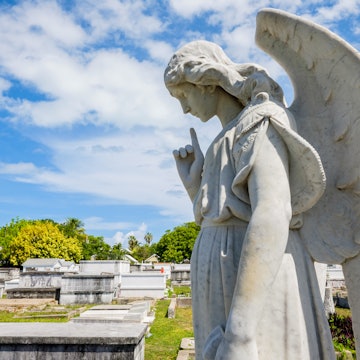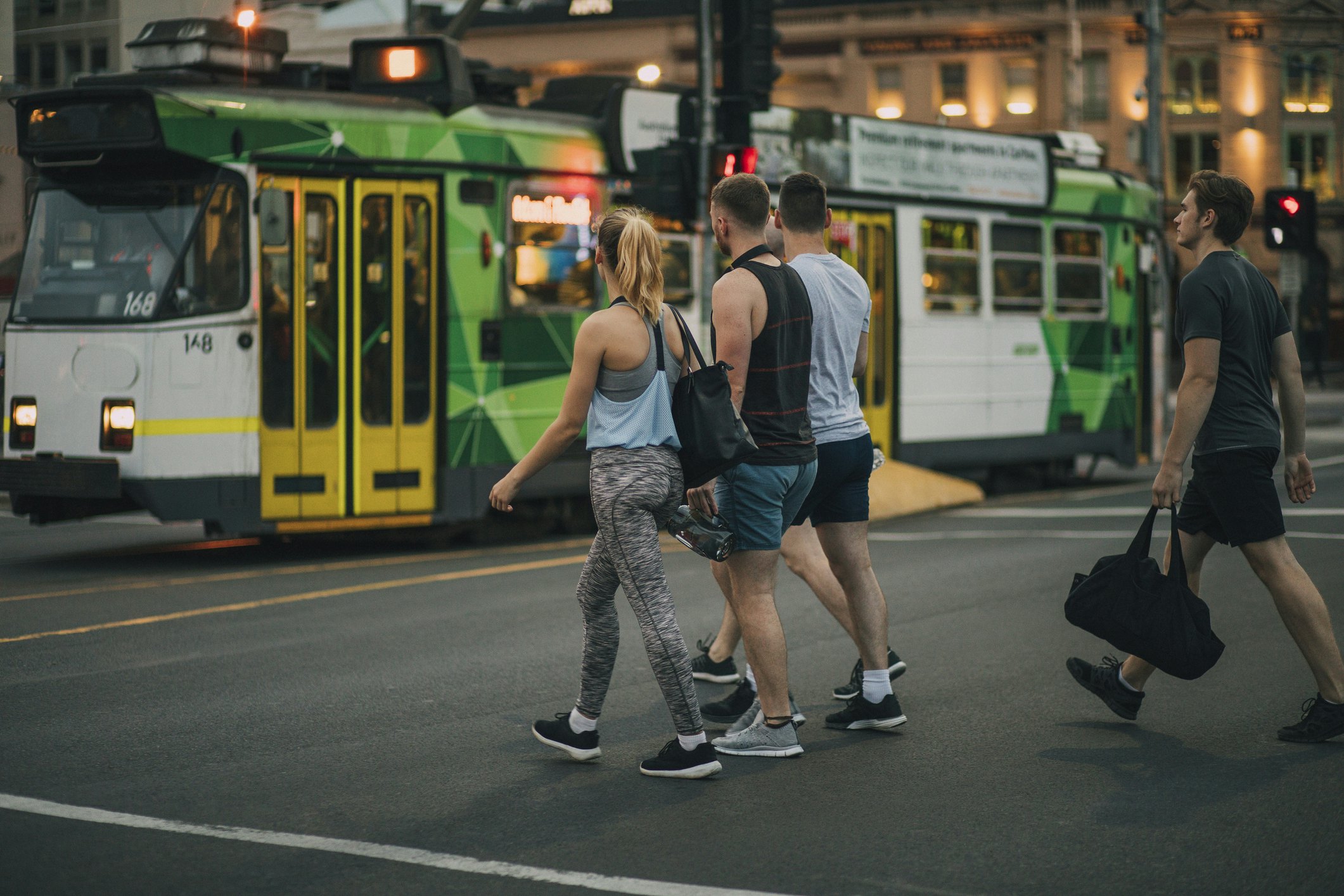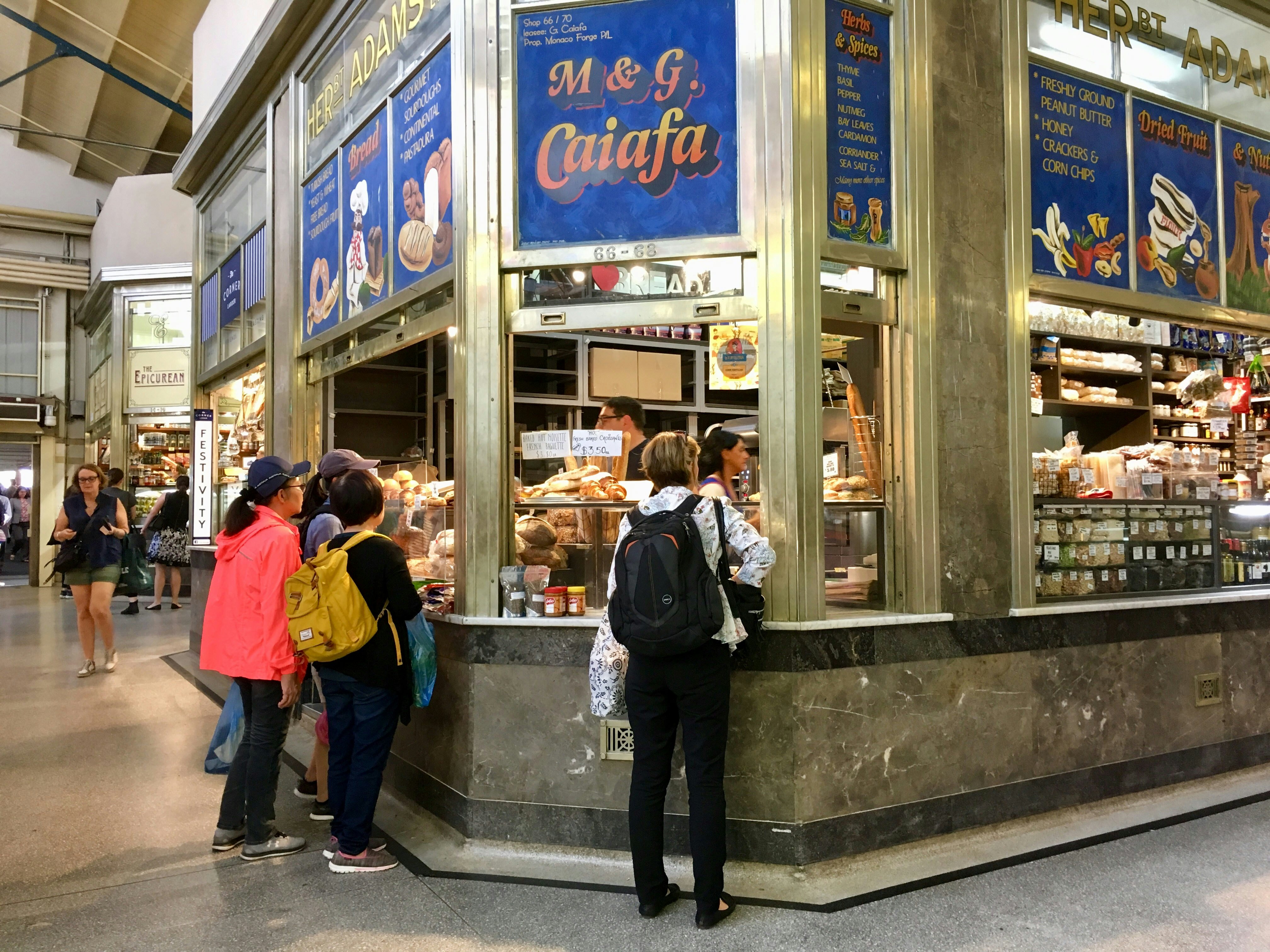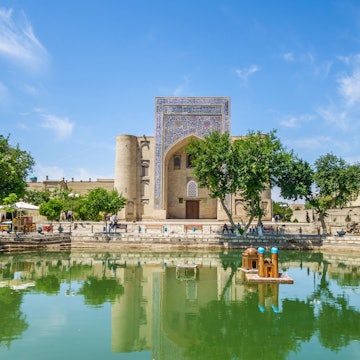

Use our insider tips to have a wonderful trip to Melbourne without breaking the bank © James Braund / Getty Images
With its thriving laneway restaurants, cool coffee culture and lively arts and sports scene, Melbourne is one of the most popular urban destinations for visitors to Australia.
Unfortunately, it’s not a cheap city to visit by international standards. Accommodation is pricey across the board and gets higher the closer you get to the city’s center.
The food scene presents a happier prospect for the budget traveler. Melbourne is one of the world’s great food cities with a dazzling array of options. There are plenty of expensive high-end restaurants, as well as loads of good-quality affordable eateries representing a range of cuisines thanks to Melbourne’s culturally diverse population.
Public transportation is also affordable, with daily caps on transit passes allowing you to get the most for your money. There are also inexpensive ways to delve into the city’s famous art scene when you know how. Here’s how to enjoy Melbourne on a budget.
Daily costs in Melbourne
Hostel bed in shared bunk room: $50 - $80
Basic room for two: $150 - $200
Self-catering apartment including Airbnb): $150 - $220
Public transport ticket: $10 (per day)
Coffee: $6
Sandwich: $13
One-course dinner for two, with a drink: $80
Pint at the pub: $13
Average daily cost per person: $180-$250
1. Stay outside the city center during the shoulder season
Melbourne is a busy city throughout the year, but its accommodation does dip slightly in price in late autumn and winter (May to August) – late summer (January and February) is the most expensive period.
If you’re not bothered about the weather, winter can be a good time to enjoy Melbourne’s great indoor attractions – dining, coffee, culture and shopping. This is when the city’s major art museum, NGV International, stages its annual “Winter Masterpieces” blockbuster exhibition featuring artists of worldwide renown.
Aside from seeking off-season room rates, your best bet is to stay in a hostel. Not just for backpackers, Melbourne’s best “flashpackers” resemble budget hotels with private rooms at reasonable rates. One of the finest is the Space Hotel on Russell Street, which has both dorm beds and private rooms.
If you prefer a hotel, there are some inexpensive options in the city center, such as Ibis Budget Melbourne CBD. Its rooms are compact and clean, and you can’t beat the central location on busy Elizabeth Street, a short walk from Flinders Street Station.
Another neighborhood that offers inexpensive accommodation – while maintaining good access to public transportation – is bayside St Kilda. Long a popular haunt of backpackers, it has various options including hostels (try Nomads St Kilda), budget hotels and Airbnb properties.

2. Take advantage of free (yes, free!) public transportation
Melbourne is a sprawling city, but it’s easy to travel across the metropolitan area via its integrated network of trams, trains and buses. For a start, the entire central business district (CBD) is inside the Free Tram Zone, which is exactly what it sounds like – travel on trams within this area is free.
Beyond that, all travel is covered by the Myki card, the city’s public transport card which you need to get around (there are no single-ticket options in Melbourne). You can buy a Myki card for $6 from train stations, convenience stores and other retailers, then add credit to cover fares. A single trip of any length costs $5 for two hours, and there’s a daily cap of $10 ($7.20 on weekends) – so once you’ve made two separate trips you can keep traveling as much as you like that day without any further cost.
Even better, the entire state of Victoria is included in this daily fare cap, so you can use your Myki to take a day trip to regional cities such as Bendigo, Ballarat and Geelong for the same maximum cost.
Another thing that even few locals know about – after 6pm each day the two-hour limit on fares ceases to operate. So, if you’re boarding public transport for the first time that day in the evening, wait until after 6pm to pay only $5 for all your trips taken before midnight.
3. Skip an expensive Uber and take public transit to the airport instead
Most people will travel between the city and the airport via taxi or rideshare vehicle for about $75, or aboard the frequent Skybus for $22. However, if you have time to spare you can get there for $5 using your Myki card. From the city center, catch a Craigieburn Line train to Broadmeadows Station, then a 901 bus to Melbourne Airport (but check that it’s not going in the other direction to Frankston).
Alternatively, if you love Melbourne’s trams and want to use one on your way out – catch a number 59 tram from Elizabeth Street in the CBD all the way to its terminus in the suburb of Airport West. From here, cross the road and walk to the bus stop next to the Red Rooster fast food outlet. Buses run every half hour to the airport on weekdays (hourly on weekends, via routes 478 and 479).
For an overview of transportation options to/from the airport, visit the Public Transport Victoria website.
4. Eat like a student
If you like good food but don’t have a big budget, you’re in luck. As a city that’s home to hundreds of cultures and millions of people who like eating out, Melbourne has food outlets catering to all prices and tastes. Thanks in part to the city’s healthy student population – including international students from around the globe – there are many places serving cheap eats.
You’ll find them on the CBD’s northern edge, which sits in close proximity to the university campuses. The stretch of Elizabeth Street from Melbourne Central Station north to Queen Victoria Market is a great place to start, as it’s dotted with inexpensive restaurants that turn out good Chinese, Indian, Japanese and Korean dishes, among others.
Melbourne’s historic Chinatown is also a good place to look for affordable meals, packed as it is with pan-Asian restaurants offering a range of dishes at competitive price points. A long-time favorite with price-conscious hungry Melburnians is the Camy Shanghai Dumpling House in Tattersalls Lane, where a bowl of delicious dumplings will run you a mere $12.
Another great option is Lygon Street in Carlton. Traditionally the home of Melbourne’s Italian migrants, it’s broadened its offerings in recent years – but you’ll still find plenty of affordable and tasty pizza and pasta along its length.
Footscray is another great food hub that’s close to the city but overlooked by visitors. A 10-minute train ride from the CBD will drop you at Footscray Station. Nearby, there’s a cornucopia of budget-friendly restaurants serving Vietnamese and Ethiopian food.

5. Visit markets for picnic supplies
Melbourne is blessed with a number of Victorian-era markets within easy reach of the CBD and the empress of them is the Queen Victoria Market, just north of the central grid (take trams 19, 57, or 59).
In addition to stalls selling top-quality ingredients suitable for a picnic in the nearby Flagstaff Gardens (olives, cheeses, bread and deli meats), the market is dotted with stalls and vans serving hot dishes. The bratwurst sausages in a bun are a longtime Melburnian favorite. Also track down the doughnut van, which sells a bag of five hot jam-filled doughnuts for $10.
Other markets within an easy tram ride from the center include South Melbourne Market (tram 96), and Prahran Market (tram 72). Two distinctly less touristy but fun choices reachable by train are Footscray Market (Footscray Station), and Preston Market (Preston Station).
6. Wander through parks and gardens
No activity is easier on the wallet than a stroll through a public garden, and Melbourne is lucky to have many wonderful options with free entry. Top of the list is the Royal Botanic Gardens, a sprawling repository of nature within a short tram ride south of the CBD. Take picnic supplies and relax in the greenery.
Other notable nature reserves include Royal Park north of the city, with large stands of native trees. Finally, a clutch of beautifully landscaped spaces can be found on the CBD’s edge, including Fitzroy Gardens, Treasury Gardens, Carlton Gardens and Flagstaff Gardens.
7. Browse fine art at great institutions
Entry is free at many of Melbourne’s best art museums. The standout is NGV International, whose sizable Modernist building sits just south of the Yarra River. Though special exhibitions come with a price tag, the permanent exhibitions are free.
Its sister campus in Federation Square, NGV Australia, displays a wealth of Australian art, including works by First Nations creators. Also located in Fed Square, the Australian Centre for the Moving Image celebrates television and film via free exhibitions.
To explore Melbourne’s heritage in the great outdoors, download the free MV Tours app created by Museums Victoria, which contains detailed walking tours of three different precincts. The tours cover everything from the role of industry to the glamor of the 19th-century gold rush era.

8. Head to the beaches
Although it doesn’t front onto an ocean, Melbourne is well-supplied with beaches around the long curve of Port Phillip Bay. Many can be reached by tram or train and have affordable cafes and other food outlets in their vicinity.
One easy beachside excursion is to catch the number 109 train to Port Melbourne, then walk along the beachside footpath, admiring both waves and 19th-century architecture, until you reach the number 1 tram terminus in Albert Park. There’s a pub and a fish-and-chip shop nearby, which provides a cheap and cheerful lunch break before you walk on to the ever-popular St Kilda or head back to the city.
From Flinders Street Station in the CBD, a train to Brighton Beach Station will drop you within walking distance of the colorful Brighton Bathing Boxes, a Melbourne icon.
9. Rock out to live music
Melbourne is Australia’s capital of live music and it often comes without a high price tag. Ignore mega-concerts and head instead to inner-city venues that host local bands where you’ll rub shoulders with Melburnian music lovers and see the talent close up. The Tote, Northcote Social Club, and Mamma Chen’s are three venues that host regular free gigs, with other shows ranging between $10 and $50.
10. Score cheap tickets for shows and more
Though Melbourne is famous for its theater scene, those seats don’t come cheap. One way to trim the price is to visit Halftix, the city’s long-running discount ticket booth. Some tickets are only available in person, so drop in and see what’s on offer. Another option is TodayTix, which hosts ticket lotteries and offers for cheaper tickets.
Looking for dinner and a show? First Table is the spot for a hefty discount (up to 50%) on restaurant bills if you’re happy to eat at an early time slot.














